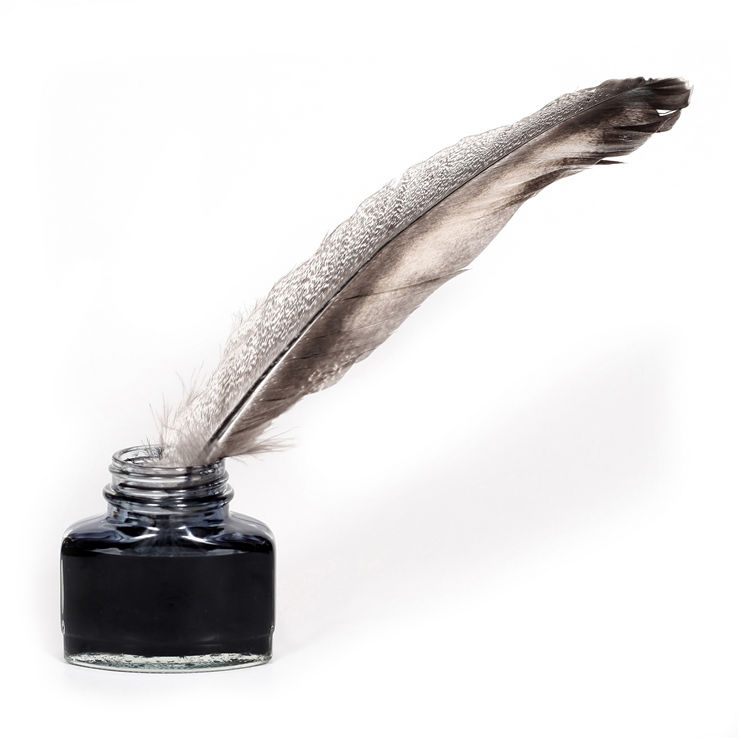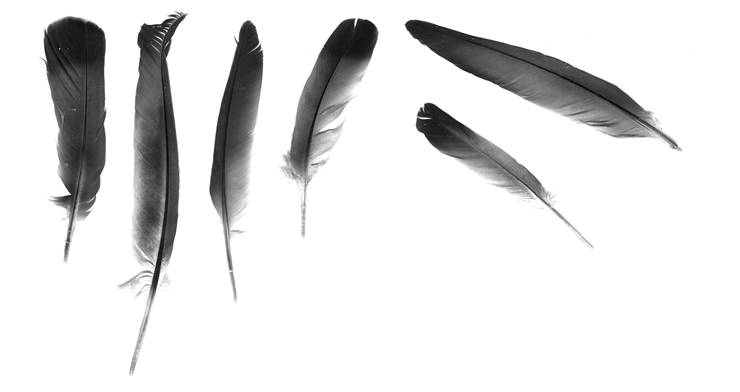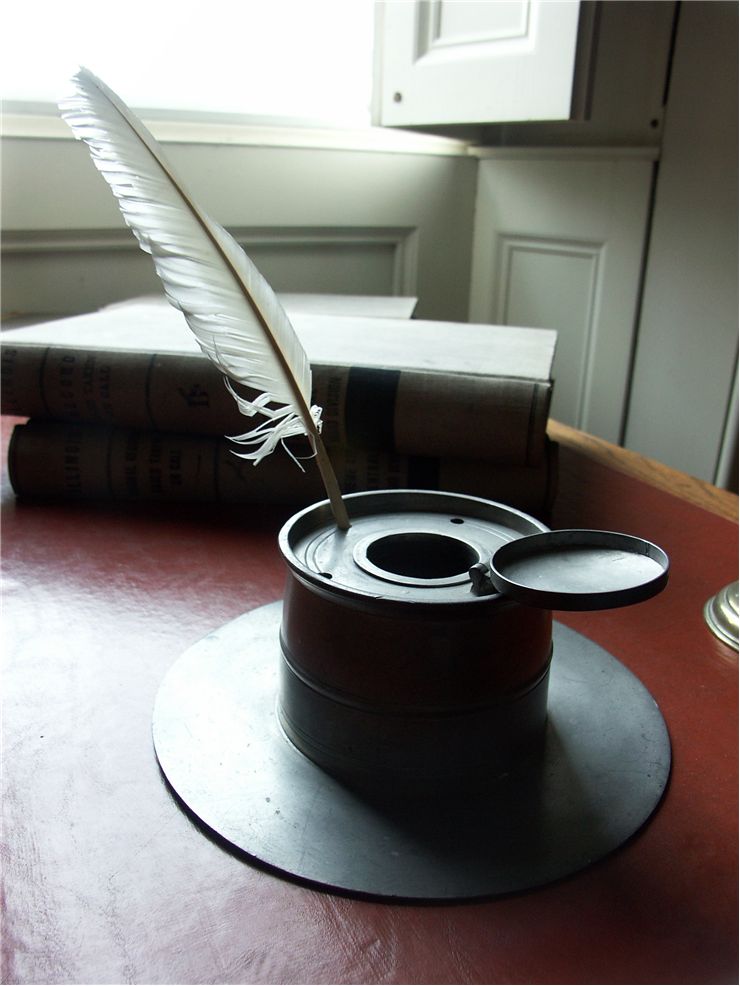History of Quill Pens
Quill (or quill pen) is a writing tool made from a large bird's flight feathers and uses ink to leave marks on a writing surface. The point of the feather is treated so it can be used for writing, and a hollow shaft of the feather holds the ink, which, from there, flows to the tip by capillary action. Quills were made from feathers of different birds, but the best ones were made from goose, swan, and turkey feathers.
Before quills, people used styluses to write on clay and wax and reed pens with ink to write on papyrus and animal skins. The problem with clay texts was that they were heavy and brittle and difficult to write (clay tablets had to be baked when finished), wax tablets didn’t last long and were sensitive to heat, and reed pens were too stiff and didn’t last long because they would wear out fast. That is why they were spontaneously replaced with quills (but not completely).
It is not known when the first quills appeared, but it is known that some parts of the Dead Sea Scrolls were written with quills in the 2nd century BC. St. Isidore of Seville mentions them in the 7th century in his writings, and it is believed that quills began to spread as a popular method of writing as better than reed pens. With quills, it was easy to write on parchment and vellum. They were also used with fine brushes to illustrate manuscripts with figures, decorations, and images. They became increasingly popular from the 15th century on when writing flourished and writing started to spread through the Western world. Many important documents, like the Magna Carta and the American Declaration of Independence, were written and signed with quills. The popularity of quills lasted until metal pens entered mass production in the 19th century, but they are still used today in some cases. For instance: 20 goose-quill pens are placed at the tables each day the U.S. Supreme Court is in session.
But you can’t just take a feather, dip it in ink and use it for writing - you have to prepare it (technically, you can, but it won’t work that well nor write beautifully). There are different methods of treating feathers to become quills. They all use large feathers (only 5 or 6 largest) from goose, swan, or turkey (although crow, eagle, owl, or hawk feathers can also be used) and try to harden their shaft. Some methods place the shaft of the feather into hot ashes until it is soft. After that, the father is flattened on a hard surface with a pen knife and rounded with fingers. Other methods use hot water or sand, but the main idea is to cure the feather and make it more flexible to withstand longer writing. After the curing, the next step is removing the point of the feather with a small knife (called a pen knife). The point is removed under the angle, not far from the point, and the upper side of the quill. It makes an oval hole. Then, a slit is made on the top side of the quill with the same pen knife. The slit will lead the ink from the shaft to the quill's point by capillary action. On the lower side of the quill, a scoop is cut larger than the first cut. The tip of the quill is slowly taking shape. Corners on both sides of the nib are cut off, and the nib is then made flat. If made correctly, the quill can last long without the need to be sharpened again.


